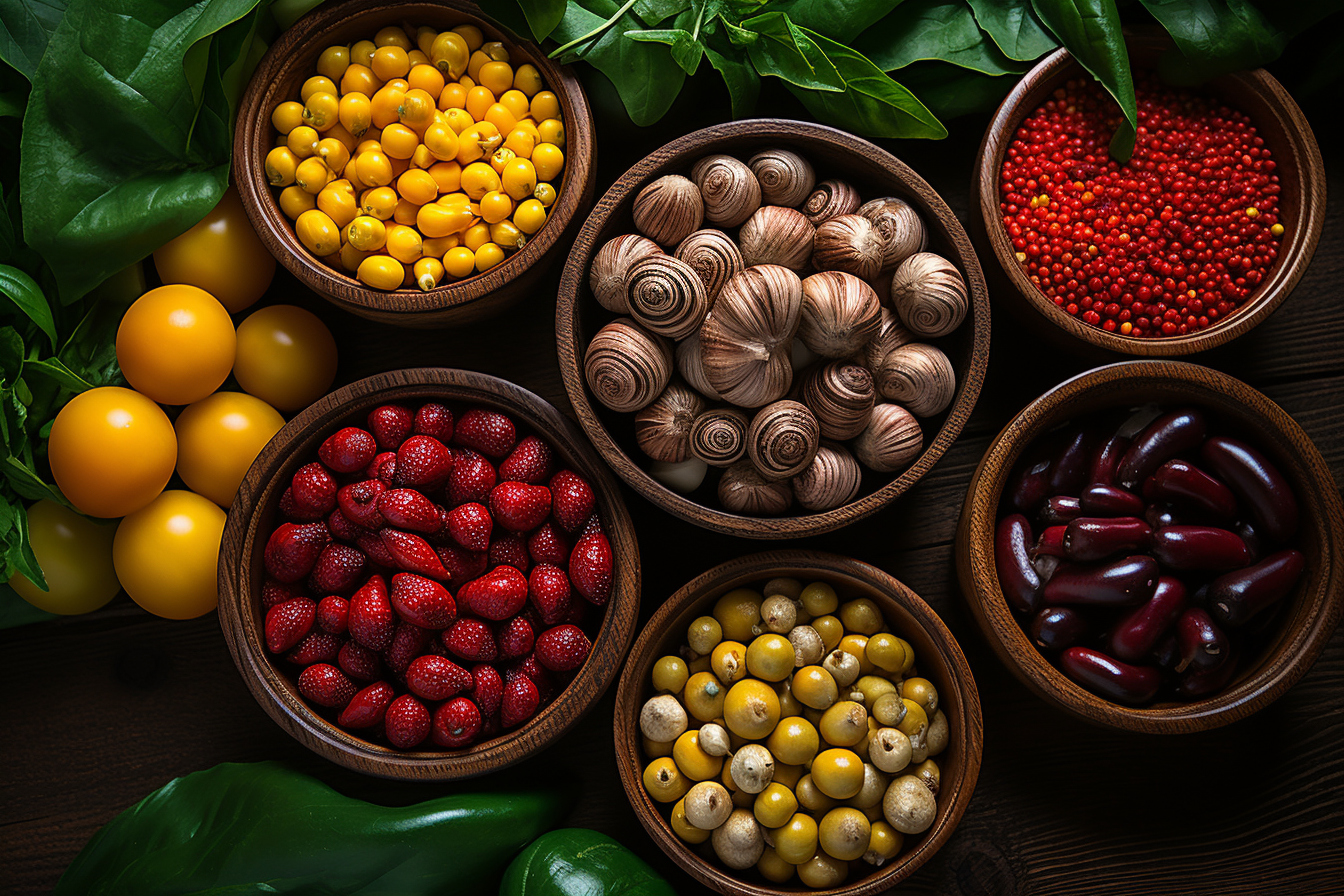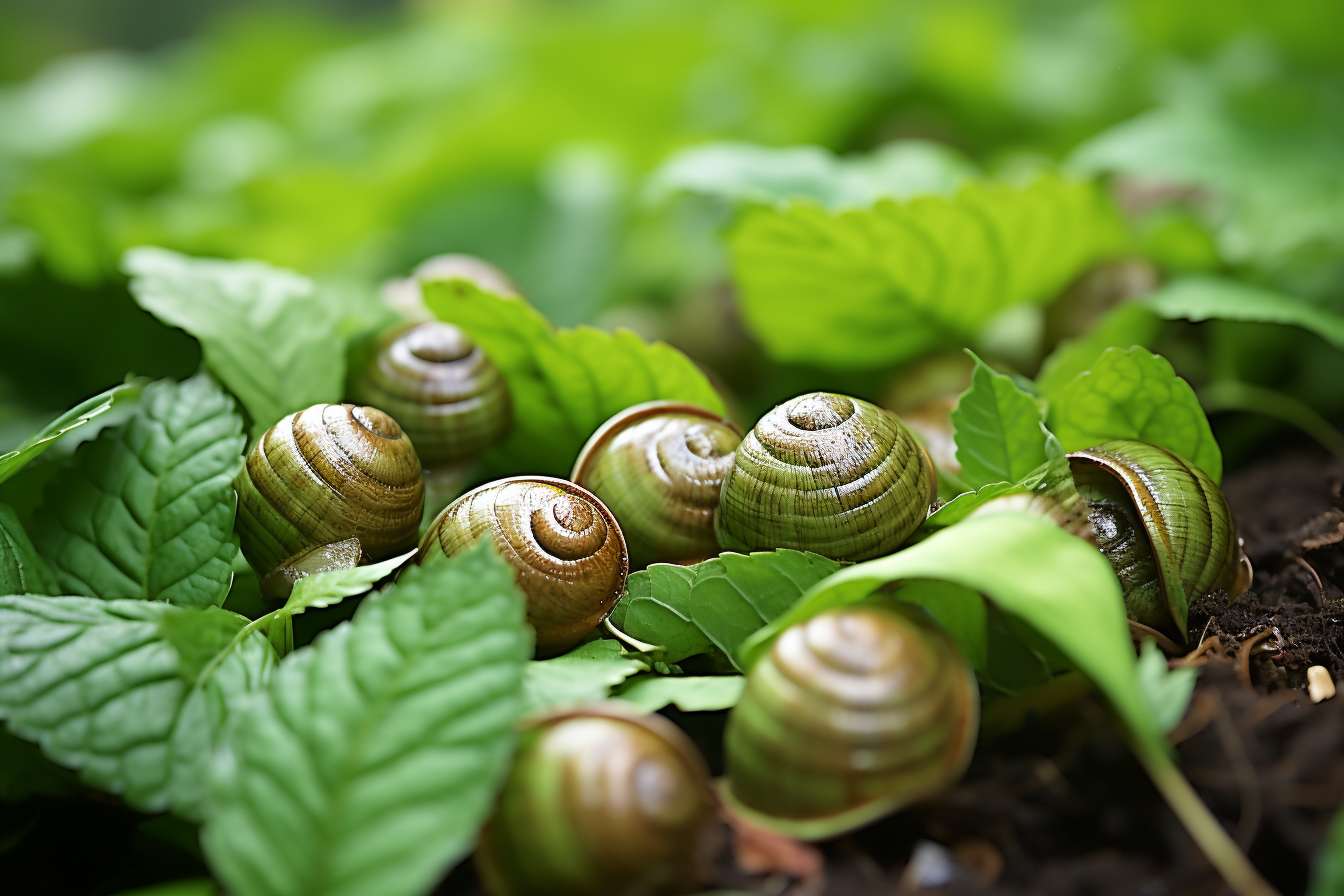Raising Burgundy snails in your garden is an exciting and rewarding activity! If you are a nature lover and looking for a new and unique experience to enjoy at home, then breeding Burgundy snails could well be the ideal solution.
Choosing the Right Environment for Your Snails
To start breeding Burgundy snails, it is essential to create an ideal environment in your garden. Snails need cool, moist soil rich in organic matter to thrive. You can prepare this space by plowing the soil over an area of approximately one square meter. Next, add a layer of compost or well-rotted manure to enrich the soil and make it more conducive to snail growth.

Reproduction of Burgundy snails
Once their environment is ready, it is time to introduce your first Burgundy snails into your garden. Make sure you purchase healthy snails from a specialized breeder. It is recommended to start with around twenty individuals to allow for better adaptation to their new habitat. Be sure to disperse them throughout your garden, spacing them evenly to avoid excessive competition between individuals.
A balanced diet for your gastropods
Burgundy snails feed mainly on fresh plants. You can provide them with a varied diet by providing them with vegetables such as lettuce, spinach, zucchini, carrots and tomatoes. Be sure to cut the vegetables into small pieces to make them easier to eat. Also consider offering them a source of calcium, essential for their growth, by providing crushed egg shells or bone meal.
Protecting snails
To ensure the good health of your Burgundy snails, it is important to protect them from natural predators such as birds, hedgehogs or rats. You can install protective nets around your garden to limit access to these pests. Also be sure to maintain a clean environment by regularly removing food waste and avoiding the presence of stagnant water, which is conducive to the development of diseases. Do not hesitate to regularly inspect your snails for possible signs of disease or stress.
Harvesting and preserving snails
After several months of breeding, your Burgundy snails will finally be ready to be harvested. Wait until the shells have reached a size of approximately 3 to 4 centimeters before collecting them. To cook them, make them fast for a few days to eliminate the toxins present in their body. You can then prepare them according to your favorite recipes, making sure to respect the appropriate hygiene and cooking rules.
The nutritional benefits of Burgundy snails
Many people start breeding Burgundy snails for the pleasure of discovery, but did you know that these gastropods also have very interesting nutritional properties? Beyond their delicate flavor, Burgundy snails are an incredible source of health benefits.
Burgundy snails are rich in protein, offering an interesting alternative to meat. These proteins are essential for growth, tissue repair, and the production of enzymes and hormones. Furthermore, compared to other meats, its fat content is relatively low, making it a wise choice for those who want to watch their calorie intake.
One of the most remarkable aspects of the Burgundy snail is its richness in minerals, particularly magnesium, phosphorus and zinc. Magnesium contributes to proper muscle function and bone health, phosphorus plays a key role in the formation of bones and teeth, while zinc is vital for the immune system, wound healing and synthesis of DNA.
Let’s not forget vitamin B12. This essential nutrient, often associated with meat and fish, is also abundant in snails. It is crucial for the formation of red blood cells and the proper functioning of nerves. People who follow a vegetarian or vegan diet can therefore consider snails as an alternative source of vitamin B12, although it is always recommended to consult a health professional to assess their nutritional needs.
Understanding the life cycle of snails for successful breeding
When venturing into the breeding of Burgundy snails, it is equally crucial to understand their life cycle to ensure their well-being and maximize their potential. Snails have a fascinating existence which, if well managed, can greatly improve the efficiency of your breeding.
The Burgundy snail, when born, is first a tiny larva without a shell. It is after a few days that it begins to develop its shell, which will thicken over time and with a regular intake of calcium. Young snails grow rapidly during the first weeks of their life, provided they have a rich and suitable diet.
The period of sexual maturity generally arrives around the age of one year. This is when the snails are ready to reproduce. It is crucial to note that snails are hermaphrodites, meaning they have both male and female reproductive organs. This means that they have the ability to produce both eggs and sperm. However, they need a partner for fertilization.
When environmental conditions become less favorable, such as during periods of drought or cold, snails enter a state of hibernation or aestivation. They then hide underground or in crevices, sealing the opening of their shell with an epiphramma, a sort of mucilaginous “cover” which protects them from external attacks. During this phase, the snail’s metabolic activity slows down considerably. When conditions become mild again, the snail emerges from its lethargy and resumes its normal activity.
The fascinating history of the Burgundy snail
For centuries, Burgundy snail is loved for its gourmet flavors and nutritional benefits, but few people know the fascinating history behind this gastropod. Let’s look back at the origins and evolution of this animal which has conquered plates around the world.
Originally from the regions of Western Europe, the Burgundy snail, also called Helix pomatia, was introduced into gastronomy by the Romans. The latter, recognizing the culinary potential of this mollusc, began to cultivate it and prepare it according to recipes which became the precursors of those we use today.
Over time, the popularity of Burgundy escargot spread to France, where it quickly became a staple of traditional French cuisine. Burgundy, famous for its world-renowned wines, has seen escargot seamlessly integrated into its culinary culture, offering a harmony of flavors when paired with a good glass of wine from the region.
But the Burgundy snail is not only a delight for the taste buds. Over the centuries, it has played a significant role in various cultures. In some European traditions, it was considered a symbol of rebirth and resurrection due to its ability to regenerate itself and regrow its shell if damaged. In others, he embodied patience and perseverance, traits admired and encouraged.













